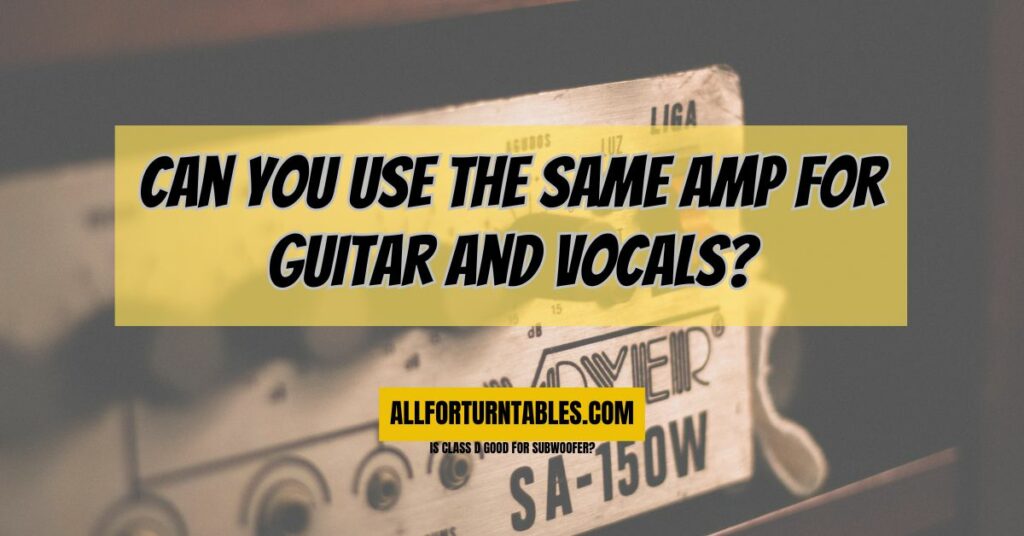As a musician or performer, you may have encountered situations where you need to simplify your equipment setup or make the most of the gear you have. One common question that arises is whether it’s possible to use the same amplifier for both your guitar and vocals. In this comprehensive article, we will explore the possibilities, advantages, challenges, and practical tips for using a single amplifier for both your guitar and vocal performances. Whether you’re a solo artist, part of a band, or a sound enthusiast, understanding this setup can be valuable in various musical contexts.
Understanding Amplifiers for Guitar and Vocals
Before we dive into the details of using a single amplifier for both guitar and vocals, let’s briefly understand the basics of amplifiers and their roles in music:
- Guitar Amplifier: A guitar amplifier, or amp, is specifically designed to amplify the signal from an electric guitar. It shapes the guitar’s tone and often includes built-in effects like distortion, reverb, and EQ.
- Vocal Amplification: Vocal amplification typically involves a dedicated PA (Public Address) system or a powered speaker with a microphone input. This system is designed to amplify the human voice accurately and clearly.
Using the Same Amp for Guitar and Vocals
Advantages:
- Simplicity: One of the primary advantages of using the same amp for both guitar and vocals is simplicity. It reduces the number of components in your setup, making it easier to transport and set up your equipment.
- Cost-Efficiency: If you’re on a budget or performing in small venues, investing in a single amplifier can save you money compared to buying separate guitar and vocal amplifiers.
- Portability: For solo performers, buskers, or those playing in intimate settings, a compact setup with one amplifier can be highly convenient and easy to manage.
Potential Challenges:
- Tonal Limitations: Guitar amplifiers are designed to color the guitar’s sound in a specific way. When you use them for vocals, you may not achieve the same tonal accuracy and clarity as a dedicated PA system or vocal amplifier.
- Feedback: Combining guitar and vocal inputs through the same amplifier can increase the risk of feedback. Careful microphone placement, volume control, and sound monitoring are essential to mitigate this issue.
- Limited Control: Guitar amplifiers often lack the dedicated EQ and effects necessary to shape the vocal sound effectively. This can result in less control over the quality of your voice.
Practical Tips:
- Use a Clean Amp Setting: If possible, set your guitar amplifier to a clean or “neutral” tone to minimize coloration of the vocal sound.
- Positioning: Place the microphone in front of the amplifier at an appropriate distance to avoid feedback issues. Experiment with microphone placement to find the optimal position.
- Feedback Control: Consider using feedback suppression tools or equalization to prevent and manage feedback.
- Volume Management: Be mindful of the volume levels for both your guitar and vocals to maintain a balanced sound without distortion or feedback.
- Consider a Mixer: If you plan to use this setup frequently, investing in a small mixer can provide better control over the sound and eliminate some of the limitations associated with using a guitar amplifier for vocals.
Using the same amplifier for both guitar and vocals is feasible and can be a practical solution in various musical scenarios. However, it does come with challenges related to tonal accuracy, feedback, and control. Your choice of setup ultimately depends on your specific needs, budget, and the quality of sound you aim to achieve. With careful planning, experimentation, and the right techniques, you can make this setup work for your musical performances, ensuring an engaging and enjoyable experience for both you and your audience.


